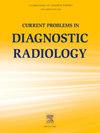北美放射学大查房的启示:确定专业介绍中的性别偏见模式
IF 1.5
Q3 RADIOLOGY, NUCLEAR MEDICINE & MEDICAL IMAGING
引用次数: 0
摘要
目的本研究旨在探讨主持人和发言人的性别以及地理位置对放射学大查房中介绍时使用专业职称的影响。具体来说,研究旨在调查主持人在介绍发言者时可能存在的性别差异,重点是正式称谓(如 "医生")的使用与非正式的基于姓名的介绍之间的比较。研究利用了加拿大和美国(USA)七家机构的英文放射学大查房视频录像,这些视频录像都是公开的。研究对象包括主持人和发言者的性别,以及主持人对发言者的职称介绍类型(介绍其为 "医生 "或其姓名后的学位证书或仅介绍其名字)。研究使用了卡方检验(Chi-square)和费雪精确检验(Fisher's Exact)来分析人口统计学变量(主持人和发言人的性别、国家)与所选介绍风格(头衔用法)之间的相关性。在 250 次介绍中,有 160 次(64.0%)使用了 "医生 "这一职业称谓,在男性主持人介绍发言者的方式上发现了明显的性别差异。男性主持人在介绍男性发言人时使用 "医生 "这一职业称谓的比例为 71.9%,而对女性发言人使用 "医生 "这一职业称谓的比例仅为 29.6%(χ²(1, N = 168) = 27.0, p < 0.001)。此外,与男性发言人(18.4%)相比,男性主持人更倾向于用 "姓名"(44.4%)来介绍女性发言人(χ²(1, N = 168) = 12.59, p <0.001)。结论虽然大多数情况下都使用 "医生 "这一头衔来介绍发言人,但据观察,与女性发言人相比,男性主持人更倾向于用 "医生 "这一头衔来介绍男性发言人,这凸显了在承认专业地位方面可能存在的性别偏见。不过,大多数情况下,女性主持人在介绍男性和女性发言人时都使用 "博士 "这一称谓。要促进两性之间的公平认可,就必须解决专业环境中的这些动态问题。本文章由计算机程序翻译,如有差异,请以英文原文为准。
Insights from North American radiology grand rounds: Determining patterns of gender bias in professional introductions
Objective
The objective of this study was to examine the impact of moderator and speaker gender, as well as geographic location, on the use of professional titles during introductions in radiology grand rounds. Specifically, the study aimed to investigate potential gender disparities in how moderators introduce speakers, focusing on the use of formal titles such as "Doctor" compared to informal name-based introductions.
Methods
The study utilized English-language radiology grand rounds video recordings from seven institutions in Canada and the United States of America (USA) that were chosen due to their publicly available videos. The gender of the moderator and speaker and the type of title introduction the speaker received from the moderator (introducing them as “Doctor” or their name followed by their degree credentials or their first name only). Chi-square and Fisher's Exact tests were used to analyze the correlation between demographic variables (moderator and speaker gender, and country) and the chosen style of introduction (title usage).
Results
The study analyzed 250 speaker introductions in radiology grand rounds presentations at institutions in Canada and the USA. The professional title "Doctor" was used to introduce speakers 160 out of 250 instances (64.0 %) and significant gender disparities were found in how male moderators introduced speakers. Male moderators used the professional title "Doctor" to introduce male speakers 71.9 % of the time but did so for female speakers only 29.6 % of the time (χ²(1, N = 168) = 27.0, p < 0.001). Additionally, male moderators were more likely to introduce female speakers by "Name only" (44.4 %) compared to male speakers (18.4 %), (χ²(1, N = 168) = 12.59, p < 0.001).
Conclusion
Although the title “Doctor” was used to introduce speakers the majority of the time, it was observed that male moderators are more likely to introduce male speakers with the title “Doctor” than female speakers, highlighting a potential gender bias in the recognition of professional status. However, female moderators were shown to introduce both male and female speakers as “Doctor” the majority of the time. Promoting equitable recognition across genders requires addressing these dynamics in professional environments.
求助全文
通过发布文献求助,成功后即可免费获取论文全文。
去求助
来源期刊

Current Problems in Diagnostic Radiology
RADIOLOGY, NUCLEAR MEDICINE & MEDICAL IMAGING-
CiteScore
3.00
自引率
0.00%
发文量
113
审稿时长
46 days
期刊介绍:
Current Problems in Diagnostic Radiology covers important and controversial topics in radiology. Each issue presents important viewpoints from leading radiologists. High-quality reproductions of radiographs, CT scans, MR images, and sonograms clearly depict what is being described in each article. Also included are valuable updates relevant to other areas of practice, such as medical-legal issues or archiving systems. With new multi-topic format and image-intensive style, Current Problems in Diagnostic Radiology offers an outstanding, time-saving investigation into current topics most relevant to radiologists.
 求助内容:
求助内容: 应助结果提醒方式:
应助结果提醒方式:


